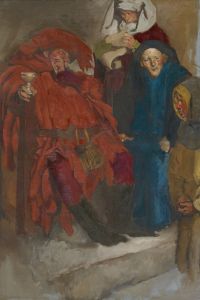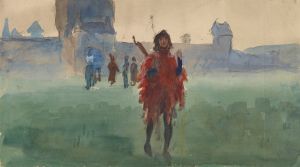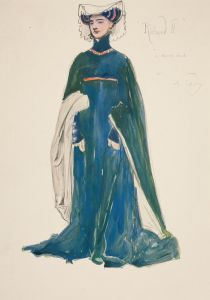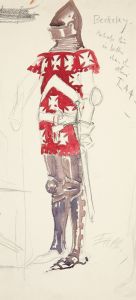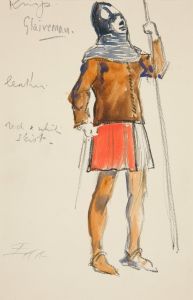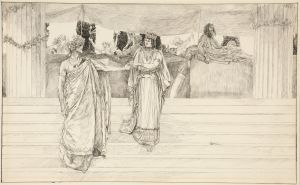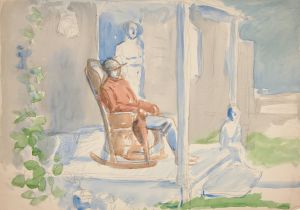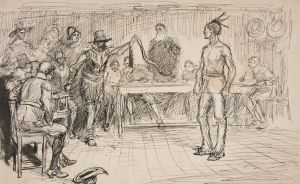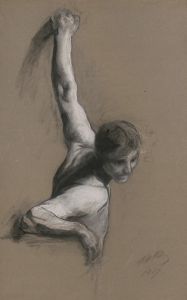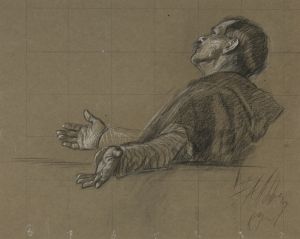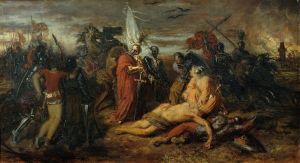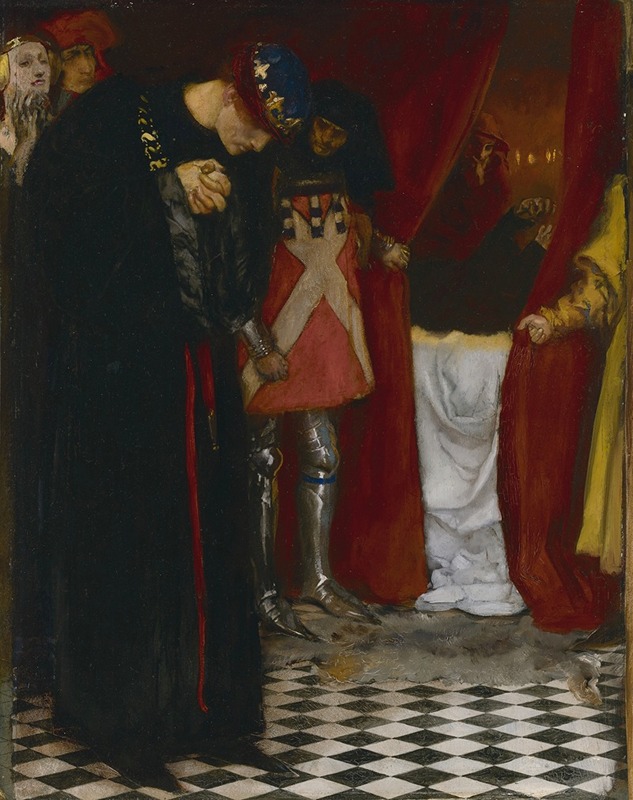
‘Come hither, gracious sovereign, view this body’, King Henry VI, Part II, Act III, Scene II
A hand-painted replica of Edwin Austin Abbey’s masterpiece ‘Come hither, gracious sovereign, view this body’, King Henry VI, Part II, Act III, Scene II, meticulously crafted by professional artists to capture the true essence of the original. Each piece is created with museum-quality canvas and rare mineral pigments, carefully painted by experienced artists with delicate brushstrokes and rich, layered colors to perfectly recreate the texture of the original artwork. Unlike machine-printed reproductions, this hand-painted version brings the painting to life, infused with the artist’s emotions and skill in every stroke. Whether for personal collection or home decoration, it instantly elevates the artistic atmosphere of any space.
Edwin Austin Abbey's painting "Come hither, gracious sovereign, view this body" is a notable work that depicts a scene from William Shakespeare's play "King Henry VI, Part II," specifically Act III, Scene II. Abbey, an American artist known for his illustrations and paintings inspired by literary and historical themes, created this artwork as part of his broader engagement with Shakespearean subjects.
The painting captures a dramatic moment from the play, where King Henry VI is called upon to witness the body of the Duke of Gloucester, who has died under suspicious circumstances. This scene is pivotal in the play, as it underscores the political intrigue and turmoil that characterize the reign of Henry VI. Abbey's interpretation of this moment is marked by his attention to historical detail and his ability to convey the emotional intensity of the scene.
Edwin Austin Abbey was born in 1852 in Philadelphia, Pennsylvania, and he gained prominence as an illustrator before transitioning to painting. His work often focused on themes from English literature and history, and he became particularly renowned for his depictions of Shakespearean scenes. Abbey's interest in Shakespeare was part of a broader cultural movement during the late 19th and early 20th centuries, which saw a resurgence of interest in the Bard's works.
Abbey's painting style is characterized by its meticulous attention to detail and its rich, vibrant use of color. In "Come hither, gracious sovereign, view this body," he employs these techniques to bring the historical setting to life, capturing the costumes, architecture, and atmosphere of the period with great accuracy. The composition of the painting is carefully arranged to draw the viewer's eye to the central figures and the emotional tension of the scene.
The painting is part of a series of works by Abbey that explore scenes from Shakespeare's plays. These works were highly regarded in their time and contributed to Abbey's reputation as a leading artist in the field of literary and historical painting. Abbey's Shakespearean paintings were exhibited widely and were instrumental in popularizing Shakespeare's plays in visual art.
Abbey's contributions to art were recognized during his lifetime, and he was elected to the Royal Academy in London, reflecting his international acclaim. His work continues to be appreciated for its artistic merit and its ability to bring historical and literary subjects to life.
"Come hither, gracious sovereign, view this body" remains an important example of Abbey's work and of the broader tradition of Shakespearean art. It exemplifies the artist's skill in translating the drama and emotion of Shakespeare's text into a visual medium, offering viewers a window into the world of the play and the historical period it depicts.





